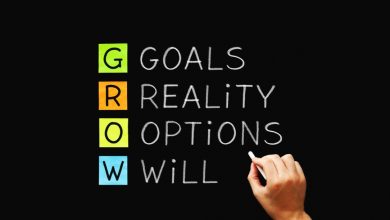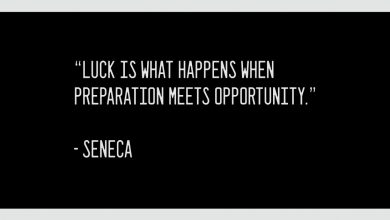The 4 levels of listening
How to transform emotional team situations by the quality of listening

The model “4 levels of listening” developed by Otto Scharmer, the mastermind of the famous Theory U, provides a great opportunity for teams to cultivate the capacity to deal successfully with challenging emotional situations.
Listening is not the same as hearing. On a purely physical level, the “hearing” occurs thanks to your ears and consequently your brain. When you are “listening” on the other hand, you need to engage your mind, body and heart. And it is the shift from pure “hearing” to full “listening” that often transforms emotional team situations into moments of collective learning and connection. The model of “4 levels of listening” developed by Otto Scharmer along with the widely known “Theory U”[1] provides valuable insights into what transformational listening is about and how we can practice it.

Let’s explore the model of “4 levels of listening”. First of all, it is important to keep in mind that this model has been developed thinking of transformative or change processes. Its main message is, therefore: If anything in any given social system needs to shift or change the capacity to listen, it needs to encompass all 4 levels. It is not suggesting that “Level 1 Listening” (Downloading) is bad or useless – it is just not enough to get out of stuck or challenging team situations!
Emotional team situations not necessarily need to be challenging. Expressing joy and happiness about collective achievements normally does not lead to irritations or even conflicts. It is more the situations when emotions such as anger or frustration appear that a lot of trainers consider challenging to deal with. Why? Usually in such situations communication shifts from mind-to-mind to mind/body/heart-to-mind/body/heart – without often having a clear awareness about what is happening inside of us and even less in the other person.
We all have been in these situations: Something is being said or done that hits our system and within fractions of a second we have reactions on all levels: body, feelings and mind – in that sequence! Any emotion starts with a physical reaction – our body reacts first! Stone in the belly; tense shoulders or facial muscles; a compressed heart; headache, etc. Then we have learned to attribute names to these physical feelings and we express emotions – or, what happens most often, neither the physical feelings nor the emotions are being expressed, but the interpretations of our mind!
Emotional Intelligence is the capacity to bring into coherence our thoughts, emotions and bodily sensations.[2] To be able to act accordingly we need to increase our awareness about what is happening in these situations in us and others – on all levels. Here we come back to the 4 levels of listening. “Level 4 Listening” suggests listening with an open mind, open heart and open will – or in other words with curiosity, compassion and courage!
The increasing depth and quality of listening from level 1 to level 4 come with the increasing presence or mindfulness of all team members. Pure hearing (or Level 1 Listening in our model) can easily be achieved while being busy with the computer or the phone in front of me or being busy thinking about my session of tomorrow. I contribute with my automatic habitual responses (“downloading”).
Level 2 Listening can best be compared with a content-related discussion. Imagine you discuss in your team the methodology for a session of the next day. You and your colleague have different ideas about the methods to use. Both explain their ideas, notice the differences, explain them with new words, new reasoning, notice still the differences, find new ways to try to convince the other – it becomes a ping-pong game!
Level 3 Listening involves already listening to the whole person not only to what the person says! Imagine a team meeting in the evening evaluating the training day that just has passed. One team member says very little or agrees with everything other team members say – but you sense that the words do not fit what the person radiates. You sense worries or irritation. So you suggest a round of “how everybody is feeling” or ask the person directly.
Level 4 listening needs FULL presence or mindfulness! Being fully present in challenging emotional team situations means listening to the whole person and to what is between all of you. You are trying to sense with your mind and body. Perhaps you are sensing in your stomach/belly that something is not going right between you and the team. You might not understand the meaning or reason for it, but you are sharing your sensation – collectively then maybe new insights can appear. A collective presence at such a level is transformative! Strong connections and learning, come out of challenging situations – rather than long-lasting bad feelings and/or irritations.
A word of warning towards the end: Cultivating presence – individually or on a team level – is not a quick “Lets-do-this-or-that-activity”-approach. It needs as said a clear intention and then repetitive practice. It is easy to forget in the busy flow of activities and therefore needs conscious reminding. Additionally, Otto Scharmer out of his experience draws our attention to the fact that in the aim to practice all 4 levels of listening we often meet “voices” blocking the way to the next level. The three voices are:
- Voice of judgment (between level 1 and 2)
- Voice of cynicism (between level 2 and 3)
- Voice of fear (between level 3 and 4)
The invitation is to be mindful to these voices when they appear and see if you can invite yourself (or others if you note it in them) to acknowledge the voice as what it is (a story of your mind) and consciously pay attention to remain open for what you are listening into.
The model of the 4 levels of listening invites us in teams to show up and be seen as a whole person. We need predominantly our knowledge, our experience, our mind to design and run training courses. Whenever people cooperate to produce a common result their desires, needs, strengths, weaknesses and personality traits play into the game. Let’s allow them in and most of all listen to the whole person – also to what is not said. Collective intelligence and collaboration need the contributions of all – and people contribute if they feel listened to, on all levels.
How to develop the capacity for levels 3 and 4 of listening?
So how can you develop such a presence and hence awareness? On a personal level certainly, regular mindfulness-practice helps. This does not necessarily mean that one has to meditate 30 minutes a day. It needs a clear intention wanting to be more often present to what is happening here and now, in the moment. There are numerous moments in our everyday life when we can practice mindful presence – daily bus or train rides, household duties, cleaning your teeth or having a shower. These moments can be used to have a minute of being fully here and now with an open mind, heart and will.
In team situations, there are also several easily accessible possibilities to cultivate a collective presence – to have it available when needed especially. Also here it helps to commit to a clear intention at the beginning. Then, it helps to start team meetings with a ritual of 2-3 minutes of silence – it might feel awkward at the beginning, but after a few times, you do not want to miss it anymore. Following the silence, you can do a round of check-in allowing every team member to express how s/he is feeling on a physical, emotional and mental level. One other useful tool is the “presence or mindfulness bell”. The bell can be any pleasant sound-making object you always have in the center of the table – and whenever any team member feels the team needs more presence you can “ring” it. Automatically (as agreed at the beginning) you would have 2-3 minutes of intentional silence and re-focus the attention.
Reflection Questions
How do you usually react when emotions appear in teams you are not comfortable with?
How easily do I notice the feelings of team members?
How often do you end up in “ping-pong” discussions in team meetings? How do you usually react when a team member has a contrasting opinion to you?
What do you usually propose in teams to make it possible for all members to show up as whole person?
How are you trying to cultivate presence in your everyday life?







One Comment